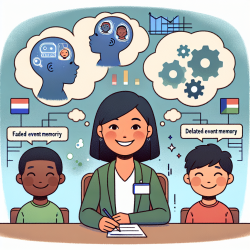In the ever-evolving field of speech-language pathology, making data-driven decisions is essential for optimizing therapeutic outcomes, especially for children. One significant advancement in recent years is the consensus on the use of the term "Developmental Language Disorder" (DLD) to describe children with unexplained language problems. This term, as outlined in the CATALISE studies by Bishop et al. (2016, 2017), aims to standardize the diagnosis and improve the identification and treatment of these children.
However, the adoption of this terminology in clinical practice varies significantly, as evidenced by a study conducted by Alyssa Kuiack and Lisa M. D. Archibald, published in the Canadian Journal of Speech-Language Pathology & Audiology. The study surveyed 370 English Canadian speech-language pathologists (S-LPs) to understand their current practices, beliefs, and attitudes towards diagnostic labeling, particularly the use of DLD.
Current Use of Labels in Canadian Practice
The study found that while the majority of S-LPs use diagnostic labels at least occasionally, there is considerable inconsistency in the specific labels used. The term "language delay" was most frequently used, while "specific language impairment" (SLI) and "developmental language disorder" (DLD) were among the least frequently used. This inconsistency can create confusion and hinder effective communication among professionals and with families.
Perceived Advantages and Disadvantages of Label Use
S-LPs reported several advantages of using diagnostic labels, including promoting understanding and awareness of a child's difficulties, providing an explanation and legitimacy for the child's struggles, and facilitating access to resources and intervention. However, concerns were also raised about potential negative consequences, such as stigmatization and focusing on a child's weaknesses rather than strengths. Interestingly, providing parents with a diagnostic label was rated as the least important assessment objective, suggesting a need for greater emphasis on the benefits of consistent labeling.
Barriers to Diagnostic Label Use
One of the significant barriers identified was the constraints imposed by professional licensing and legislative bodies, particularly in Ontario, where many respondents practiced. Despite these restrictions, a substantial number of S-LPs indicated that they would be likely to use diagnostic labels if these limitations were removed. This finding highlights the need for clearer guidelines and support from regulatory bodies to facilitate the use of standardized terminology like DLD.
Knowledge and Attitudes Towards DLD
While over 80% of respondents were aware or somewhat aware of the term DLD, less than half could accurately define it. Despite this, most S-LPs agreed that having a consistent diagnostic label would improve advocacy and outcomes for children with language disorders. The study also found that S-LPs would be more likely to use the label DLD if it were commonly used by their peers and supported by international consensus.
Implications for Clinical Practice
The findings of this study underscore the importance of adopting standardized terminology in speech-language pathology. For TinyEYE, which provides online therapy services to schools, incorporating the use of DLD can enhance the consistency and quality of services offered. By aligning with international standards and promoting the use of DLD, TinyEYE can help ensure that children receive the most accurate diagnoses and effective interventions.
Conclusion
In conclusion, while the adoption of the term DLD is still evolving, it holds promise for improving the identification and treatment of children with language disorders. By addressing the barriers to label use and promoting the benefits of standardized terminology, speech-language pathologists can enhance their clinical practices and outcomes for children. As we continue to integrate data-driven decisions into our work, we must remain committed to using evidence-based practices to support the children we serve.
To read the original research paper, please follow this link: Canadian Journal of Speech-Language Pathology & Audiology.










